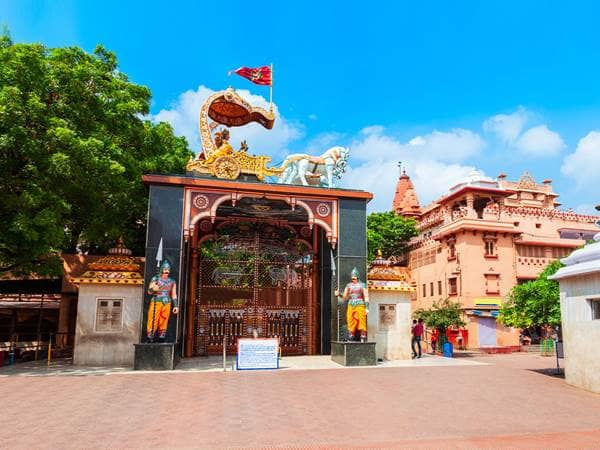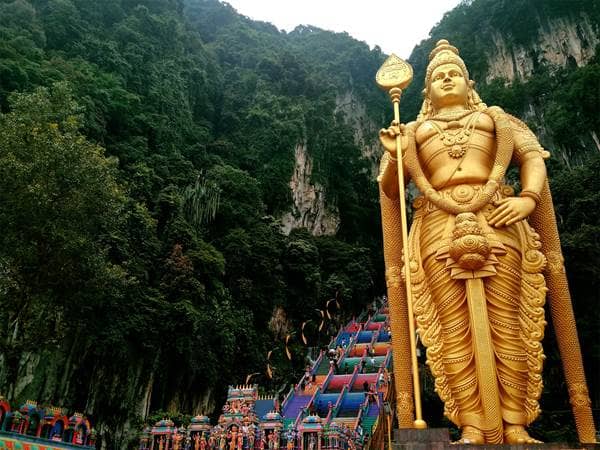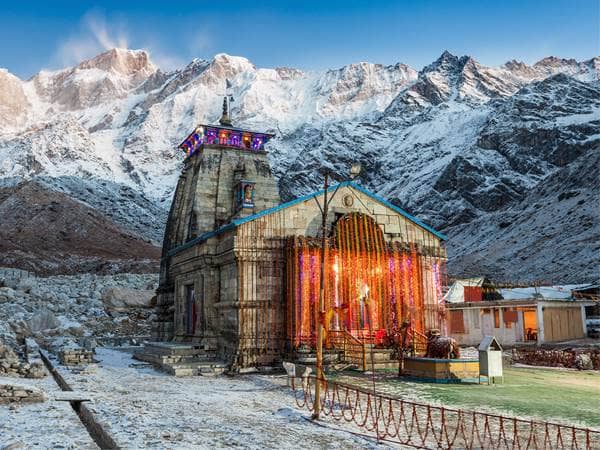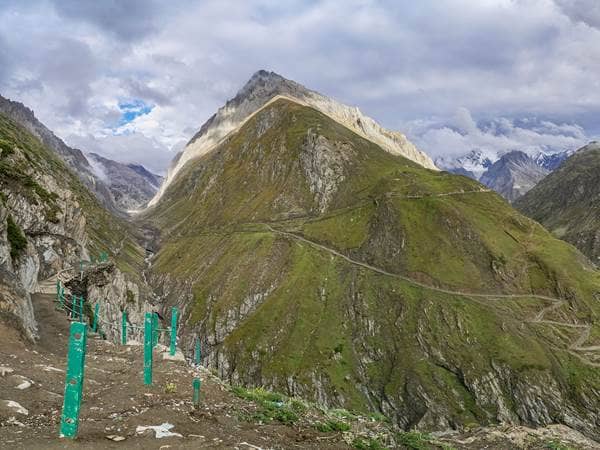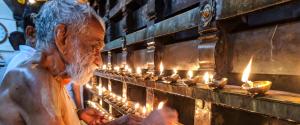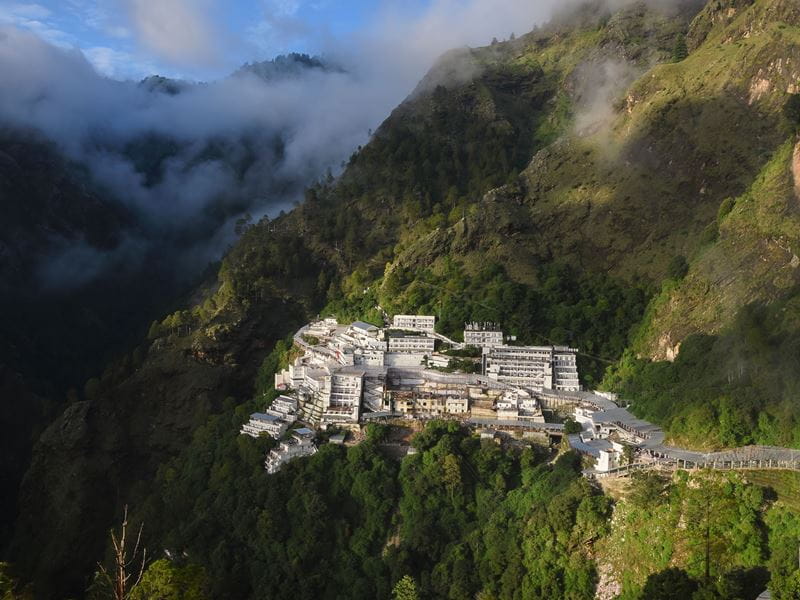
- Trending:
- Israel
- |
- Faith and Mental Health
- |
- Forgiveness
- |
- Marriage
- |
- Parenting
- |
- Suffering





Also Known As:
Vaishno Devi Temple, Shri Mata Vaishno Devi Temple.
Associated Faiths:
Accessibility:
Open to visitors.
Annual visitors: 8,000,000
History
The Vaishno Devi Temple is a natural mountaintop cave in Katra, India. A popular pilgrimage site for Hindu devotees, the arduous trek up the steep mountain is some 7.5 miles on foot. On average, more than 20 thousand people make their way to the cave-temple each day, which is remarkable in light of its remoteness and the fact that the trail is often lined with ice and snow.
The Vaishno Devi Temple is associated with the Hindu goddess Durga—one of the wives Shiva. However, the lengthy trek to the cave-temple is actually lined with several other shrine-temples. The first of those being the Bhumika temple, commemorating the spot where Durga disappeared. Next is the Ban Ganga temple, where Durga is said to have shot an arrow into the ground—which caused the sacred Ban Ganga river to appear. Right about halfway through the 7.5 mile trek, one comes to Adhkuwari (which is the place of the “Cave of the Eternal Virgin”).
A singular visit to this site is believed to cleanse the believer of all sins. As one progresses up the mountain, one comes to the Charan Paduka temple, where the footprints of Durga are preserved. Next comes the Garbha Joon cave, where Durga hid (for 9 months) from the demon Bhairon. Finally, after an additional steep ascent, one comes to the official Vaishno Devi cave (at 5,100 feet).
Technically, the Vaishno Devi cave is the only temple in India where Lakshmi (the goddess of fortune), Sarasvati (the goddess of learning), and Kali (the goddess of time and death) are worshiped together in the same location. (There are a few temples that have replicas of this, but they are only replicas.) Within the Vaishno Devi Temple are three natural rock formations which are called the “Holy Pindis.”
According to Hindu belief, they are Durga’s incarnations as Lakshmi, Saravati, and Kali. Thus, these three goddesses are all just avatars or incarnations of Durga and do not technically constitute alternate deities, but manifestations of the very goddess to which the entire mountain is seemingly dedicated.
Beyond the Vaishno Devi Temple, approximately 1,600 feet further up the mountain, is the Bhairon temple. While it may seem strange to have a temple dedicated to a demon (killed by a goddess), according to Hindu belief, this temple represents the spot where Bhairon’s head landed when Durga killed him. Tradition says, after he was slain by her, Bhairon prayed to Durga—asking for forgiveness. Thus, she absolved him of his karmic sins, thereby turning what might otherwise seem like an “evil site” into a “sacred site.” It is customary for pilgrims who have made the trek to the Vaishno Devi cave-temple to visit the Bahairon temple as well.
Religious Significance
Vaishno Devi is a manifestation (or incarnation) of the Hindu goddess Durga—who is the wife of Shiva. Other names of Durga, in addition to Vaishno Devi, are Ambe, Mata Rani, Trikuta, and Vaishnavi. “Mata” (as in Mata Rani) is an Indian term for Mother, and Durga (in the form of Vaishno Devi) is the “mother goddess.” Thus, pilgrims constantly chant “Jai Mata Di,” meaning “Praise to the Mother,” as they ascend the mountain and as they pass through her sacred cave. Sometimes referred to as Adi Shakti, she “enables” Shiva to function in his capacity as a god. (The term “shakti” means to “enable.”) Thus, Vaishno Devi is an important deity in Hinduism, and the several sacred sites along the 7.5 path to her cave commemorate important events which took place on the mountain.
The specific and primary reason that this cave constitutes a “sacred space” in Hinduism is found in the story of what supposedly happened there. As the legend tells, approximately 700 years ago, Bhairon attended a feast. During the feast, Durga appeared and served the guests whatever food they desired, pulling their preferred fodder out of her “wish fulfilling pot.” Bhairon, however, sought to make problems for her by requesting meat which, of course, she could not serve. This made Bhairon angry, so he sought to harm her for rejecting his request. Durga fled and Bhairon pursued. She made her way to the Garbha Joon cave and spent the next nine months hiding and meditating there. When Bhairon found her, he chased her to another cave near the top of the mountain, where Durga slew him. Thus, the cave-temple is a holy site. It represents one of the great battles between good and evil—between a goddess and a demon. And, as one would expect, good triumphed over evil. What sacred events, and what a holy thing for a believing Hindu to get to visit the very site at which these happenings are said to have taken place.
In the Vaishno Devi cave, there are many rock formations which are said to be manifestations of the 330 million gods who have visited the cave-temple to honor Durga and what she accomplished there. Of course, for the believer, knowing that 330 million gods have paid tribute to these events shows how very sacred this site is. Thus, to make a pilgrimage to the Vaishno Devi Temple is to walk were hundreds of millions of gods have walked. For any believer, that would be a holy experience.
Visitors to the cave-shrine, and who pray with pure hearts, are said to never leave empty handed. Because of the number of visitors each day often tops 20,000, the experience of darshan (or viewing the image of the deity) can last as little as 3 seconds. Nonetheless, the arduous trip is seen as worth the tremendous sacrifice—most particularly because of the promise of fulfilled wishes (if only the pilgrim can have a clean heart when petitioning Vaishno Devi).
A visit to the Bhairon Temple, just 1,600 feet further up the mountain, is also said to be spiritually impactful—even though technically this is the site where Durga killed the demon Bhairon. According to tradition, after forgiving Bhairon, Durga made the promise that any pilgrim who visited the place would have all of his or her righteous desires fulfilled. Thus, like her own temple-cave, even in this alternate site, Vaishno Devi has promised devotees remarkable blessings for making their trek. With such remarkable promises and the forgiveness of all sins, the inability to leave empty handed, and the granting of all righteous desires, the Vaishno Devi Temple is a sacred space of promises, blessings, and divine events that faith-filled Hindu pilgrims flock to in the millions each and every year.


